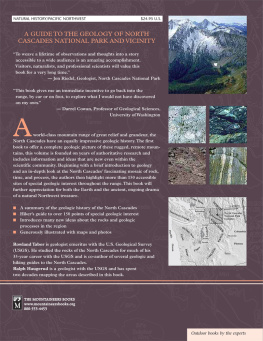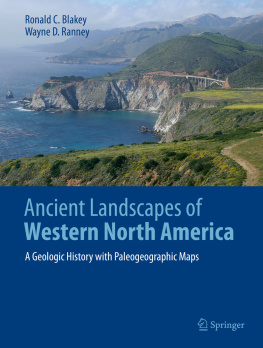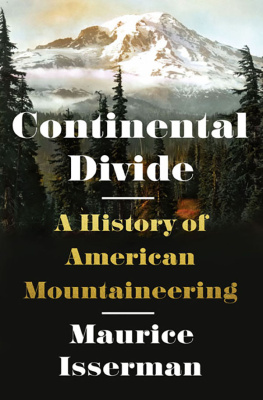John Dvorak - How the Mountains Grew: A New Geological History of North America
Here you can read online John Dvorak - How the Mountains Grew: A New Geological History of North America full text of the book (entire story) in english for free. Download pdf and epub, get meaning, cover and reviews about this ebook. year: 2021, publisher: Pegasus Books, genre: Children. Description of the work, (preface) as well as reviews are available. Best literature library LitArk.com created for fans of good reading and offers a wide selection of genres:
Romance novel
Science fiction
Adventure
Detective
Science
History
Home and family
Prose
Art
Politics
Computer
Non-fiction
Religion
Business
Children
Humor
Choose a favorite category and find really read worthwhile books. Enjoy immersion in the world of imagination, feel the emotions of the characters or learn something new for yourself, make an fascinating discovery.

- Book:How the Mountains Grew: A New Geological History of North America
- Author:
- Publisher:Pegasus Books
- Genre:
- Year:2021
- Rating:5 / 5
- Favourites:Add to favourites
- Your mark:
- 100
- 1
- 2
- 3
- 4
- 5
How the Mountains Grew: A New Geological History of North America: summary, description and annotation
We offer to read an annotation, description, summary or preface (depends on what the author of the book "How the Mountains Grew: A New Geological History of North America" wrote himself). If you haven't found the necessary information about the book — write in the comments, we will try to find it.
John Dvorak: author's other books
Who wrote How the Mountains Grew: A New Geological History of North America? Find out the surname, the name of the author of the book and a list of all author's works by series.
How the Mountains Grew: A New Geological History of North America — read online for free the complete book (whole text) full work
Below is the text of the book, divided by pages. System saving the place of the last page read, allows you to conveniently read the book "How the Mountains Grew: A New Geological History of North America" online for free, without having to search again every time where you left off. Put a bookmark, and you can go to the page where you finished reading at any time.
Font size:
Interval:
Bookmark:
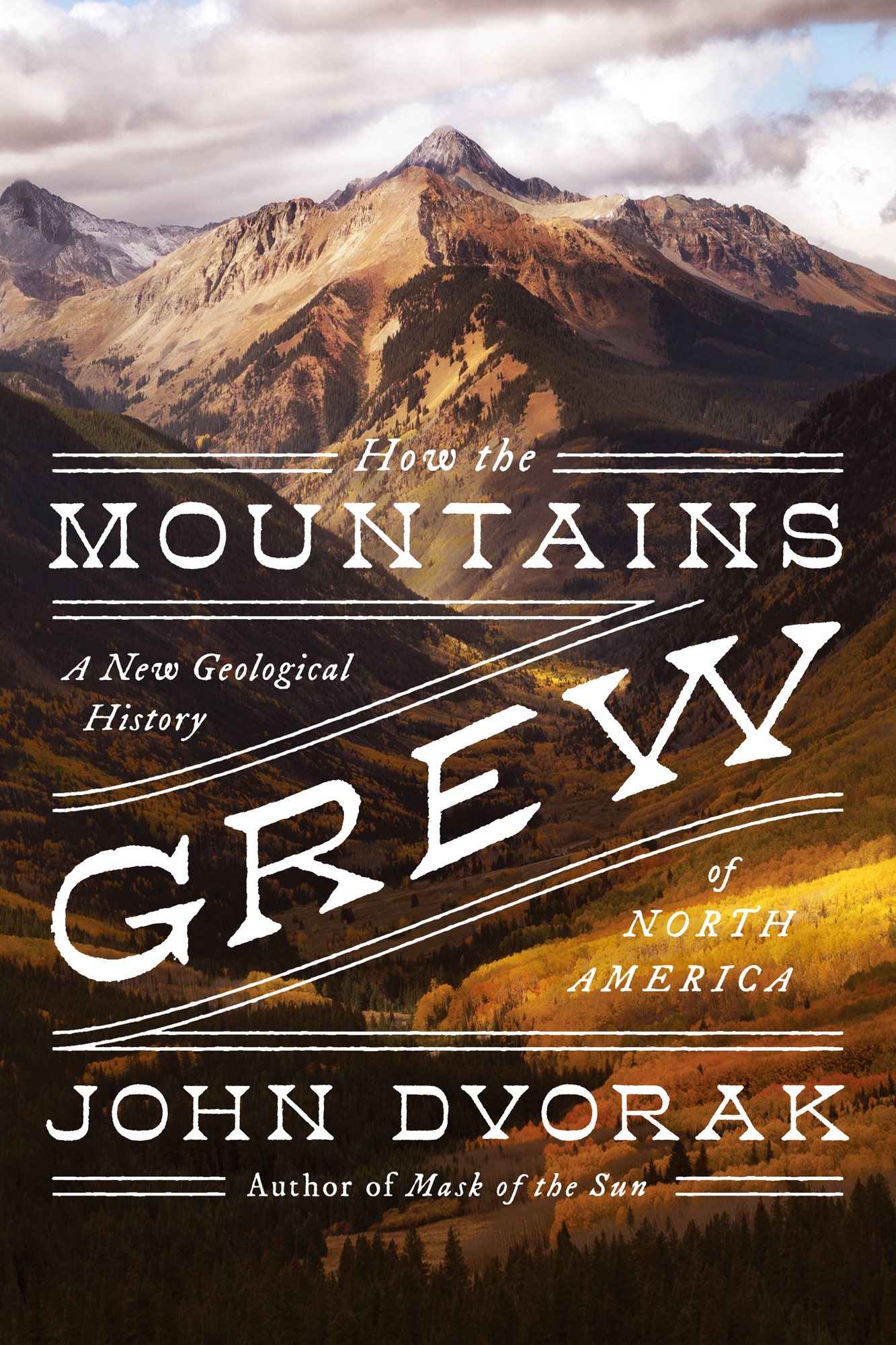
How the Mountains Grew
A New Geological History of North America
John Dvorak
Author of Mask of the Sun


Garden of the Gods
Great sandstone fins jut out more than 300 feet into the air east of Colorado Springs, Colorado, the remnants of two mountains ranges: the Ancestral Rockies, which formed more than 200 million years ago, and the modern Rocky Mountains, which began to form 80 million years ago. Photo used with permission: Tonda at iStock.
HOW THE MOUNTAINS GREW
Pegasus Books, Ltd.
148 West 37th Street, 13th Floor
New York, NY 10018
Copyright 2021 by John Dvorak
First Pegasus Books cloth edition August 2021
Interior design by Maria Fernandez
Jacket design by Faceout Studio, Spencer Fuller
Jacket image by Stocksy
All rights reserved. No part of this book may be reproduced in whole or in part without written permission from the publisher, except by reviewers who may quote brief excerpts in connection with a review in a newspaper, magazine, or electronic publication; nor may any part of this book be reproduced, stored in a retrieval system, or transmitted in any form or by any means electronic, mechanical, photocopying, recording, or other, without written permission from the publisher.
Library of Congress Cataloging-in-Publication Data is available.
ISBN: 978-1-64313-574-8
Ebook ISBN: 978-1-64313-575-5
Distributed by Simon & Schuster
www.pegasusbooks.com
To Joyce and Sarah, who continue to inspire me
Charles Lyell, working in the nineteenth century, remarked that there were three things one must do to understand the Earth: travel, travel, travel. I agree. To this end, throughout this book, I have described numerous places where one can go and see the rocks that record the major events that have shaped our planet. If, during the course of reading this book, the reader ventures to one or more of these placesand, once there, surveys the landscape and contemplates how dramatically the surface of the planet has changedand, from that, realizes that the Earth has a deep history that can be read and understoodthen the writing of this book will have been worthwhile.
There was nothing but land; not a country at all, but the material out of which countries are made.
Willa Cather, My ntonia, 1918
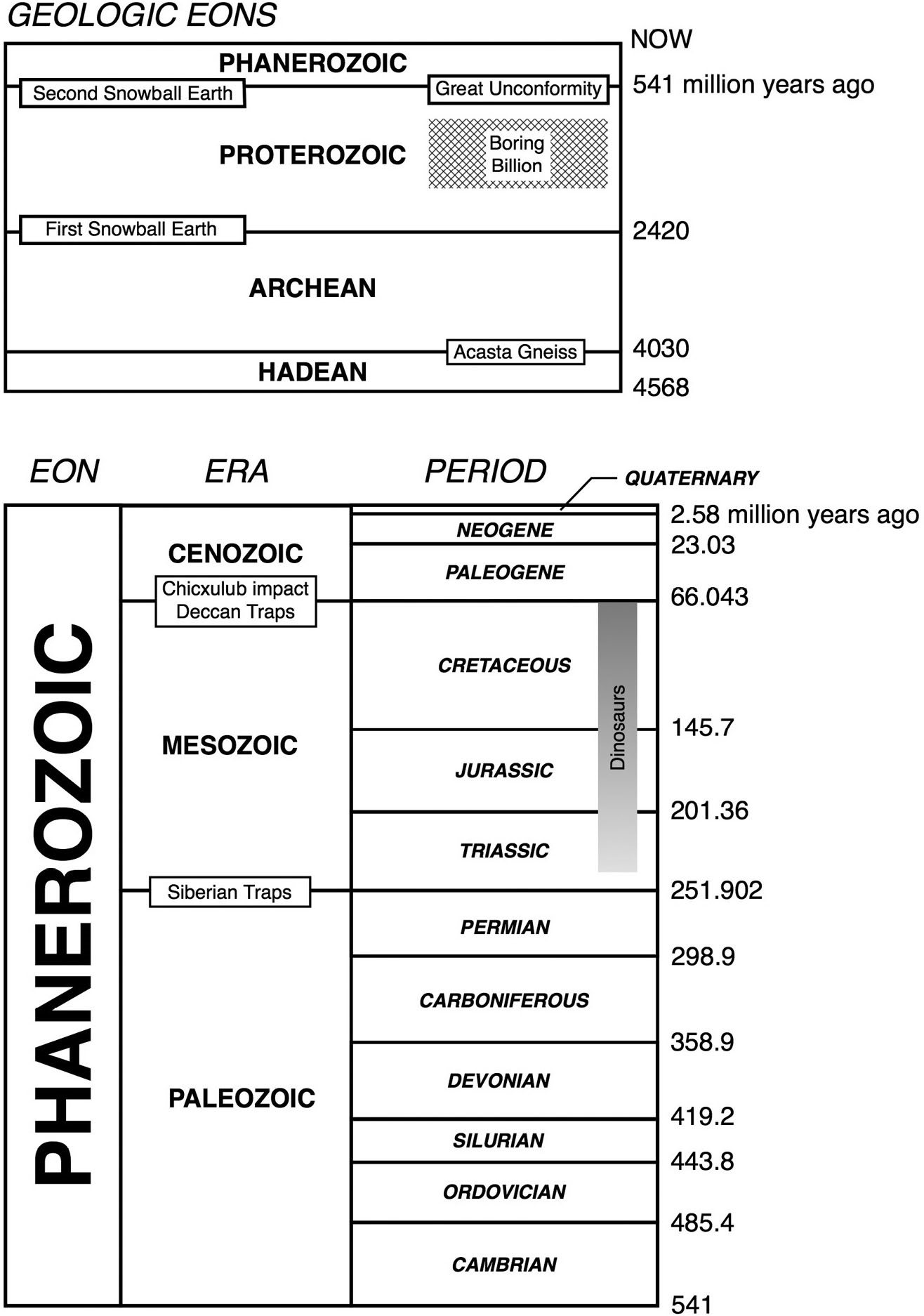
Geologic Time Scale
I n the far western reaches of South Dakota, among the many towers and great blocks of hard rock that are the Black Hills, the faces of four former presidents stare out from high on a rocky cliff face. These four facesGeorge Washington, Thomas Jefferson, Theodore Roosevelt, and Abraham Lincolncolossal by any standard, were literally blasted out of the hard rock with dynamite. They were then chiseled into their final forms with jackhammers manned by a small army of men who suspended themselves down the steep cliff face at the ends of long steel cables and who sat on broad leather straps that resembled bosuns chairs to do their work.
In all, it took fourteen years to complete the stone carvings at Mount Rushmore. The artist who conceived and directed the work, Gutzon Borglum, would tell politicians and newspapermen who could promote his work that it was his intention to make something more than the biggest in the world. It was his goal to produce a monument that would last through the ages, one that would rival the great stone statuaries of ancient Egypt and of ancient Rome. In that, he succeeded. But there is something more here, something decidedly different if one takes the time to study the four great stone carvings and to explore the surrounding countryside.
Look at George Washington. He and the other three are carved out of a light gray rock. Immediately below Washington is a band of a much darker rock with a distinct pattern of loose lines that sweep up and to the left. The light gray rock is a granite, once a bulbous mass of molten rock that rose up out of the Earths crust where it cooled and solidified. The dark rock was originally composed of ocean sediments that are much older than the granite. Long after those sediments were laid down, they were buried, then heated when the granite was molten and rose up and moved into the crust. The effects of the burial and of the heat changed the mineral content so that a new suite of minerals formed. That transformed the original ocean sediments into a different type of rock, a metamorphic rock that, from the degree of transformation, is known as a schist.
Now hike the trails and drive the roads that run through the Black Hills. One soon discovers that the dark schist forms a ring around the granite. More exploration reveals the ring of schist to be surrounded by three more rings. The first, moving outward, is a yellow limestone, the next a red shale, and finally, a white sandstone. From a high, overhead view, the entire assemblage looks like a giant blister that has risen out of the Earth and had the outer layers of skin scraped away. That, in fact, is not far from the truth.
At the center of the blister is the granite. It and the schist and the other three rings of rock have been pushed up so that a broad dome has formed, the Black Hills. The amount of upward movement has been considerable. The highest point in the Black Hills is Black Elk Peak. It stands several thousand feet above the broad surrounding plain, making it the highest point of land between the nearby Rockies and the distant Pyrenees.
That is the puzzle. Why do the Black Hills, one of the youngest mountain ranges in North America, stand so high, and why do they lie so isolated in the middle of a continent? Most mountain ranges, at least most that are rising today, lie along the edge of a continent where other geologic activity is high, meaning where earthquakes are frequent and where volcanoes are erupting. For North America, that is along the West Coast where the Cascades, the Sierra Nevada, and the Traverse Ranges of Southern California are rising. So why did the Black Hills form where they did? Why so recently? Why is there a mass of rocky cliffs and high peaks standing in the middle of North America?
For a long time, geologists could say little more than the obvious about why mountains grew: There were forces acting inside the Earth that pushed the surface upward, and that formed mountains. Then came the theory of plate tectonics.
This theory, developed in the 1960s, proposed that the surface of the Earth is divided into a dozen or so rigid platestectonic platesthat are in constant motion. As the plates move, the boundaries between the plates push or pull or slide against each other. It is where the pushing or the pulling or the sliding is taking that earthquakes are frequent and where volcanoes are now erupting.
It is where two plates are pushing against each other that mountains form. The Himalayas are rising because the tectonic plate that includes the subcontinent of India is pushing against the massive continent of Eurasia, another tectonic plate. The Andes are a product of a tectonic plate, one that underlies part of the Pacific Ocean, slamming into South America.
Font size:
Interval:
Bookmark:
Similar books «How the Mountains Grew: A New Geological History of North America»
Look at similar books to How the Mountains Grew: A New Geological History of North America. We have selected literature similar in name and meaning in the hope of providing readers with more options to find new, interesting, not yet read works.
Discussion, reviews of the book How the Mountains Grew: A New Geological History of North America and just readers' own opinions. Leave your comments, write what you think about the work, its meaning or the main characters. Specify what exactly you liked and what you didn't like, and why you think so.


